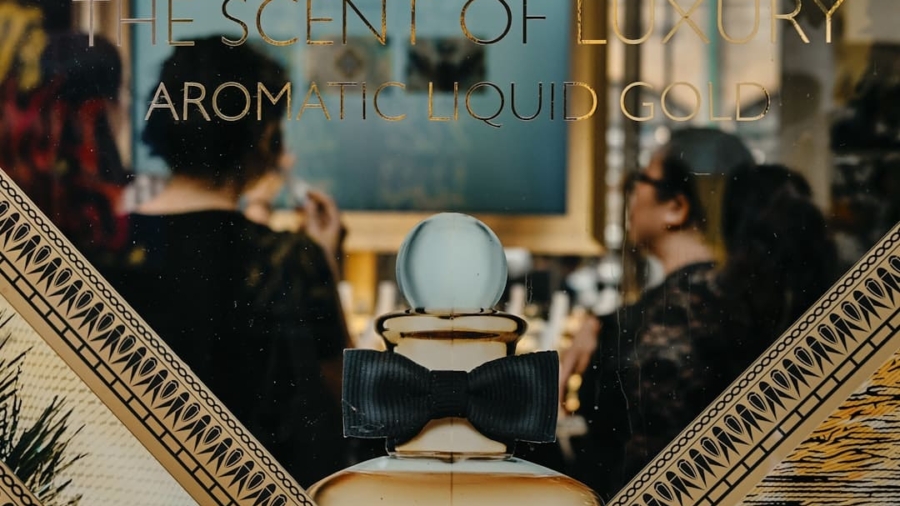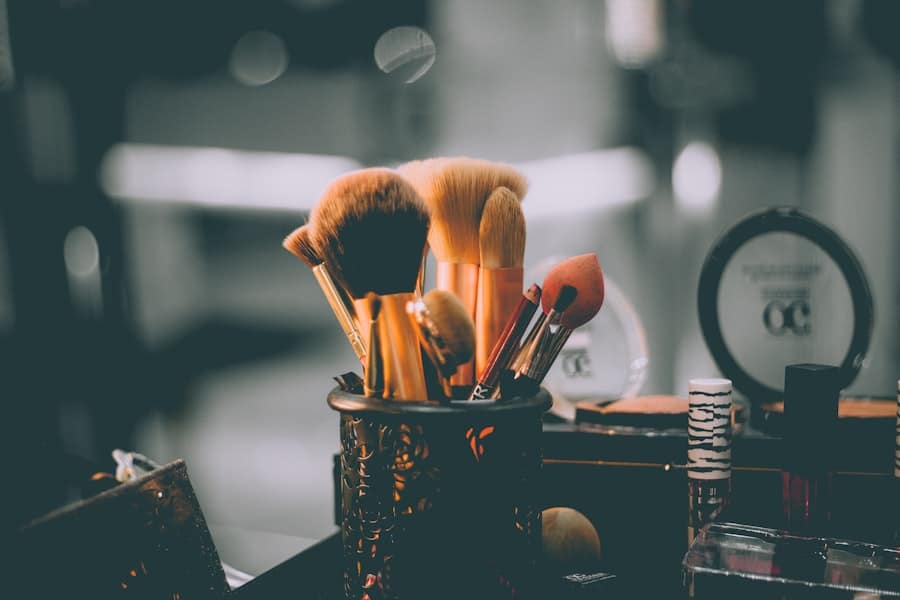Augmented Reality (AR) has emerged as a transformative technology across various sectors, and the beauty industry is no exception. By overlaying digital information onto the real world, AR creates immersive experiences that enhance consumer engagement and decision-making. The beauty sector, characterized by its emphasis on aesthetics and personal expression, has embraced AR to revolutionize how consumers interact with products.
This technology allows users to visualize makeup, skincare, and haircare products in real-time, bridging the gap between physical and digital shopping experiences. As consumers increasingly seek personalized solutions and interactive experiences, AR stands out as a powerful tool that caters to these evolving demands. The integration of AR into the beauty industry is not merely a trend; it represents a fundamental shift in how brands connect with their customers.
With the rise of social media and e-commerce, consumers are more informed and discerning than ever before. They desire authenticity and personalization in their beauty routines, which AR can provide by allowing users to experiment with products virtually before making a purchase. This capability not only enhances customer satisfaction but also reduces the likelihood of returns, benefiting both consumers and brands alike.
As we delve deeper into the various applications of AR in beauty, it becomes evident that this technology is reshaping the landscape of beauty retail and consumer engagement.
Key Takeaways
- AR technology is revolutionizing the beauty industry by offering immersive and interactive experiences for consumers.
- Virtual try-ons and makeup simulations allow customers to experiment with different looks and products before making a purchase.
- Customized skincare and haircare solutions use AR to analyze individual needs and provide personalized recommendations.
- Interactive shopping experiences enable customers to virtually test products and make informed decisions from the comfort of their homes.
- AR-powered beauty consultations and tutorials offer expert guidance and education, enhancing the overall consumer experience.
Virtual Try-Ons and Makeup Simulation
One of the most significant applications of AR in the beauty industry is virtual try-ons, which allow consumers to experiment with makeup products without physically applying them. Brands like L’Oréal and Sephora have pioneered this technology, enabling users to see how different shades of lipstick, eyeshadow, or foundation would look on their skin tones through their smartphones or in-store kiosks. This innovation not only enhances the shopping experience but also empowers consumers to make informed choices based on their unique features and preferences.
For instance, L’Oréal’s “ModiFace” technology uses facial recognition to accurately map a user’s face, providing a realistic simulation of how various products will appear. Moreover, virtual try-ons have proven particularly beneficial during the COVID-19 pandemic when many consumers were hesitant to visit stores. The ability to try on products virtually from the comfort of home has allowed brands to maintain customer engagement and drive sales despite physical distancing measures.
Additionally, this technology has democratized beauty by making it accessible to a broader audience.
As AR continues to evolve, we can expect even more sophisticated simulations that incorporate factors like lighting conditions and skin texture for an even more realistic experience.
Customized Skincare and Haircare Solutions
Beyond makeup applications, AR is also making waves in the realm of skincare and haircare. Brands are leveraging this technology to offer personalized recommendations based on individual skin types, concerns, and hair textures. For example, companies like Neutrogena have developed AR tools that analyze users’ skin conditions through their smartphone cameras.
By assessing factors such as acne, dryness, or pigmentation, these tools can suggest tailored skincare regimens that address specific needs. This level of customization not only enhances the effectiveness of products but also builds trust between consumers and brands. In haircare, AR applications allow users to visualize different hairstyles or colors before committing to a change.
Brands like Garnier have introduced virtual hair color try-ons that enable consumers to see how various shades would look on them in real-time. This feature is particularly appealing for those considering drastic changes, as it alleviates the anxiety associated with potential dissatisfaction after a salon visit. By providing a platform for experimentation, AR empowers consumers to make choices that align with their personal style while minimizing the risk of regret.
Interactive Shopping Experiences
The integration of AR into retail environments has transformed traditional shopping into interactive experiences that captivate consumers’ attention. Retailers are increasingly adopting AR technologies to create engaging in-store displays that encourage exploration and discovery. For instance, brands like Ulta Beauty have implemented AR mirrors that allow customers to try on makeup virtually while browsing products in-store.
This interactive approach not only enhances the shopping experience but also encourages customers to spend more time exploring different products. Furthermore, AR can enhance online shopping by providing immersive experiences that replicate the tactile nature of in-store browsing. Virtual showrooms allow consumers to navigate through digital spaces where they can interact with products as if they were physically present.
For example, some brands have developed AR applications that enable users to visualize how skincare products are applied or how makeup looks under different lighting conditions. This level of interactivity fosters a deeper connection between consumers and products, ultimately leading to increased sales and brand loyalty.
AR-Powered Beauty Consultations
AR technology is also revolutionizing beauty consultations by enabling virtual interactions between consumers and beauty experts. Brands are leveraging AR platforms to offer personalized consultations that guide users through product selection based on their unique needs and preferences. For instance, companies like Estée Lauder have introduced virtual consultation services where users can connect with beauty advisors via video calls while using AR tools to visualize product applications in real-time.
These consultations provide an opportunity for brands to deliver tailored advice that resonates with individual customers. By utilizing AR during these sessions, beauty advisors can demonstrate product application techniques or suggest complementary items based on the user’s preferences. This personalized approach not only enhances customer satisfaction but also fosters brand loyalty as consumers feel valued and understood.
As technology continues to advance, we can anticipate even more innovative ways for brands to connect with their customers through AR-powered consultations.
AR-Enhanced Beauty Education and Tutorials
Education plays a crucial role in the beauty industry, and AR is enhancing how consumers learn about products and application techniques. Brands are increasingly utilizing AR technology to create interactive tutorials that guide users through various beauty routines step-by-step. For example, makeup brands like Maybelline have developed AR applications that provide users with virtual tutorials on how to achieve specific looks using their products.
By overlaying instructional graphics onto users’ faces in real-time, these tutorials make learning accessible and engaging. Moreover, AR-enhanced education extends beyond product application; it also encompasses skincare knowledge and ingredient education. Brands can use AR to provide detailed information about product ingredients and their benefits through interactive displays or mobile applications.
This transparency empowers consumers to make informed choices about the products they use on their skin and hair. As consumers become more knowledgeable about beauty products, they are likely to develop stronger connections with brands that prioritize education and transparency.
Influencer and Brand Partnerships in AR Beauty
The rise of social media influencers has significantly impacted the beauty industry, and AR technology is facilitating new forms of collaboration between influencers and brands. Influencers can leverage AR tools to create engaging content that showcases products in innovative ways. For instance, many influencers use virtual try-on features to demonstrate how different makeup looks can be achieved using specific products.
This not only provides valuable content for their followers but also drives traffic to brand websites as viewers are encouraged to try the products themselves. Brands are also recognizing the potential of partnering with influencers who specialize in AR content creation. By collaborating with these creators, brands can tap into new audiences while showcasing their products in an authentic context.
For example, an influencer might host a live virtual event where they use AR technology to demonstrate makeup application techniques while interacting with viewers in real-time. This type of engagement fosters community building around brands while providing consumers with relatable content that resonates with their interests.
The Future of AR in the Beauty Industry
As we look ahead, the future of AR in the beauty industry appears promising and full of potential for further innovation. With advancements in artificial intelligence (AI) and machine learning, we can expect even more sophisticated AR applications that offer hyper-personalized experiences for consumers. For instance, future developments may include AI-driven skin analysis tools that provide real-time feedback on skin health or recommend products based on changing environmental factors such as weather or pollution levels.
Additionally, as 5G technology becomes more widespread, the capabilities of AR applications will expand significantly.
This could lead to the development of fully interactive virtual beauty salons where consumers can receive consultations, try on products, and purchase items all within a single digital environment.
In conclusion, augmented reality is poised to redefine the beauty industry by enhancing consumer engagement through innovative applications such as virtual try-ons, personalized consultations, and interactive shopping experiences. As brands continue to explore the possibilities offered by this technology, we can anticipate a future where beauty shopping becomes an even more immersive and personalized journey for consumers worldwide.
The article “What Are the Marketing Technologies for 2023” explores the latest advancements in marketing technology that are shaping the future of the industry. This article provides valuable insights into the tools and strategies that businesses can utilize to stay ahead of the curve in a rapidly evolving digital landscape. With the beauty industry increasingly embracing technologies like augmented reality, this article serves as a valuable resource for companies looking to leverage cutting-edge marketing technologies to enhance their brand presence and engage with consumers in innovative ways. To learn more about the marketing technologies shaping the future, check out the article here.
FAQs
What is AR?
AR stands for Augmented Reality, which is a technology that superimposes a computer-generated image on a user’s view of the real world, thus providing a composite view.
How is AR transforming the beauty industry?
AR is transforming the beauty industry by allowing customers to virtually try on makeup and hair products before making a purchase. This technology provides a more personalized and interactive shopping experience.
What are some examples of AR in the beauty industry?
Some examples of AR in the beauty industry include virtual makeup try-on apps, virtual hair color try-on tools, and virtual skincare analysis tools.
What are the benefits of AR in the beauty industry?
The benefits of AR in the beauty industry include increased customer engagement, personalized shopping experiences, and reduced product returns.
How are beauty brands using AR to enhance customer experience?
Beauty brands are using AR to enhance customer experience by offering virtual try-on experiences, providing personalized product recommendations, and creating interactive tutorials and guides.
Is AR widely adopted in the beauty industry?
Yes, AR is becoming increasingly popular in the beauty industry, with many major beauty brands and retailers incorporating AR technology into their online and in-store experiences.



